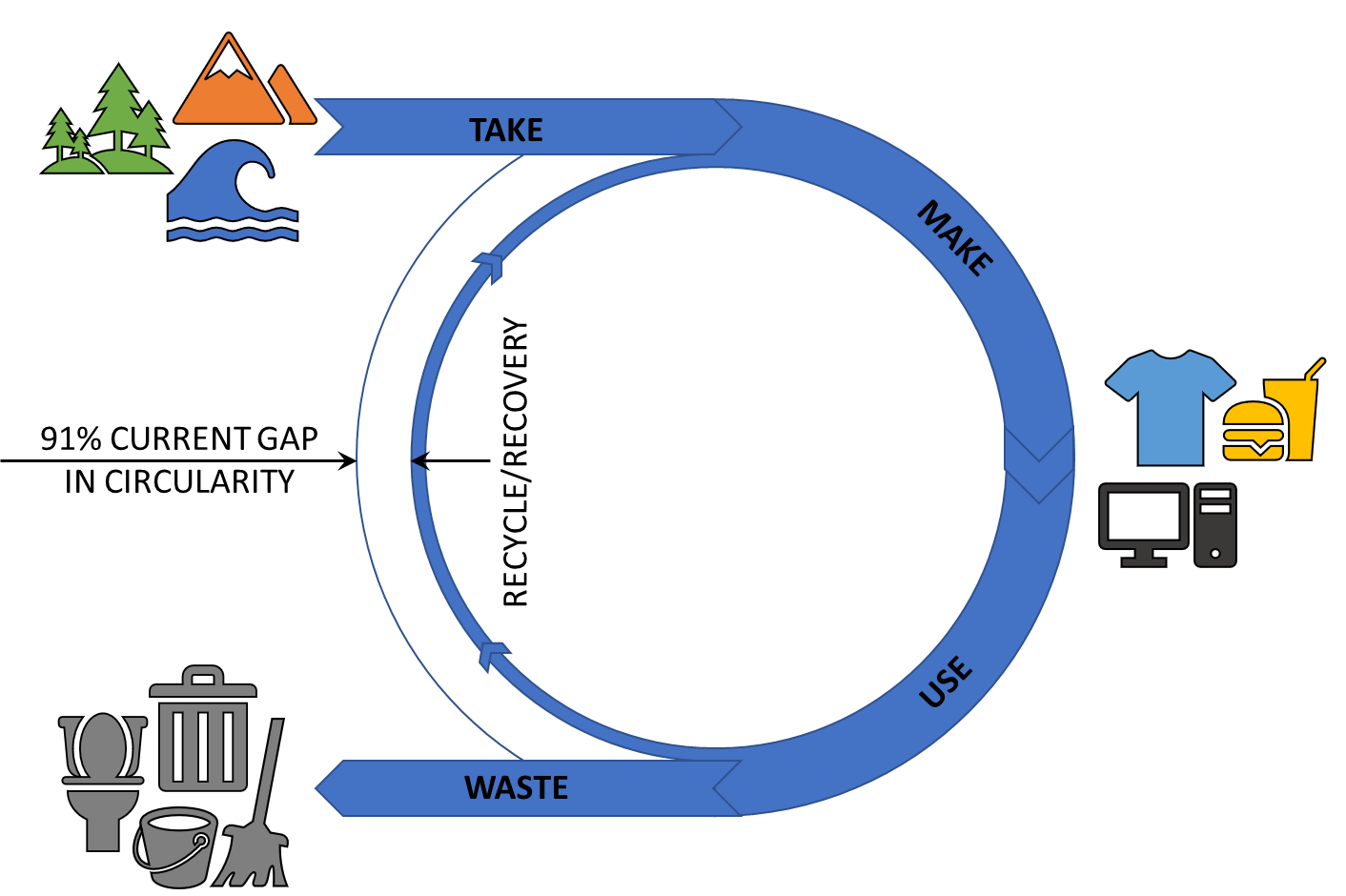- 3.3Impact Factor
- 7.7CiteScore
- 20 daysTime to First Decision
Transitioning to a Circular Economy with Sustainable Waste Management
This special issue belongs to the section “Waste and Recycling“.
Special Issue Information
Dear Colleagues,
Waste management often requires a landfill to bury waste or an incinerator to burn it. These are perhaps the most well-organized waste management options available today, if the objective is just to “manage”. However, burying and burning are certainly not sustainable options. Going one step further to design the same landfill to capture methane (bioreactor landfill) or the same incinerator to make energy (waste-to-energy), can make the process of waste management address all aspects of sustainability: the environment, the economy, and society. This would also provide socioeconomic benefits such as income creation, in addition to safeguarding the environment and public health. Examples go beyond energy, as there is much more that we already recover like paper, plastics, glass, etc. and even the organic fraction that contributes to nutrient recycling through composting.
In addition to all of the above, recycling and recovery can play an important role in the way we manage our natural resources: the more we recycle/recover, the less we must borrow from our limited natural resources. As shown in Figure 1, sustainable waste management has a large, yet untapped, potential to make our economy circular. This is particularly important with the rising demand in production to cater to the increasing population and the changing consumption habits. Unfortunately, the amounts we recycle/recover on a global scale, as of now, is very low. Not only is it low but it also has a decreasing trend currently: the circularity of the global economy has decreased from 9% in 2018 to 8.6% in 2020 [2, 3]. Sustainable waste management has improved a lot over the past 30–40 years. However, these numbers suggest that there is much more to be achieved. While science and engineering can help with technological solutions, their implementation depends heavily on contributions from the socioeconomic disciplines.
In this context, this Special Issue is particularly interested in capturing how sustainable waste management can be used to expedite our transition to a circular economy. You are invited to contribute with new technologies, their implementation, policy analysis/adaptation (including the Sustainable Development Goals), socioeconomic aspects, and, most importantly, case studies that cover one or combination of topics. While the main emphasis is on solid waste, circular economy applications arising from water recycling are also welcome.

Figure 1. The material flow in the current economy that is only 9% circular [1].
References:
- Hettiarachchi, H. The Peak of Sustainable Waste Management Assures the Sustainability of Natural Resources, But Only in a Circular Economy. In Proceedings of the International Conference on Sustainability of Natural Resources, Qassim, Saudi Arabia, 5–6 November 2019. https://www.researchgate.net/publication/338867880_The_Peak_of_Sustainable_Waste_
Management_Assures_the_Sustainability_of_Natural_Resources_But_Only_in_a_Circular_Economy - Circle Economy. The Circularity Gap Report 2018; Circle Economy, 2018. https://www.circle-economy.com/insights/the-circularity-gap-report-our-world-is-only-9-circular
- Circle Economy. The Circularity Gap Report 2020; Circle Economy, 2020. https://www.circularity-gap.world/2020
Prof. Dr. Hiroshan Hettiarachchi
Guest Editor
Manuscript Submission Information
Manuscripts should be submitted online at www.mdpi.com by registering and logging in to this website. Once you are registered, click here to go to the submission form. Manuscripts can be submitted until the deadline. All submissions that pass pre-check are peer-reviewed. Accepted papers will be published continuously in the journal (as soon as accepted) and will be listed together on the special issue website. Research articles, review articles as well as short communications are invited. For planned papers, a title and short abstract (about 250 words) can be sent to the Editorial Office for assessment.
Submitted manuscripts should not have been published previously, nor be under consideration for publication elsewhere (except conference proceedings papers). All manuscripts are thoroughly refereed through a single-blind peer-review process. A guide for authors and other relevant information for submission of manuscripts is available on the Instructions for Authors page. Sustainability is an international peer-reviewed open access semimonthly journal published by MDPI.
Please visit the Instructions for Authors page before submitting a manuscript. The Article Processing Charge (APC) for publication in this open access journal is 2400 CHF (Swiss Francs). Submitted papers should be well formatted and use good English. Authors may use MDPI's English editing service prior to publication or during author revisions.
Keywords
- sustainability
- waste management
- environmental resources
- circular economy
- waste policy
- recycling and recovery
- sustainable development goals
Benefits of Publishing in a Special Issue
- Ease of navigation: Grouping papers by topic helps scholars navigate broad scope journals more efficiently.
- Greater discoverability: Special Issues support the reach and impact of scientific research. Articles in Special Issues are more discoverable and cited more frequently.
- Expansion of research network: Special Issues facilitate connections among authors, fostering scientific collaborations.
- External promotion: Articles in Special Issues are often promoted through the journal's social media, increasing their visibility.
- e-Book format: Special Issues with more than 10 articles can be published as dedicated e-books, ensuring wide and rapid dissemination.

